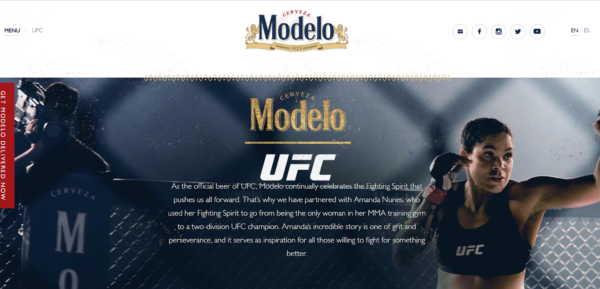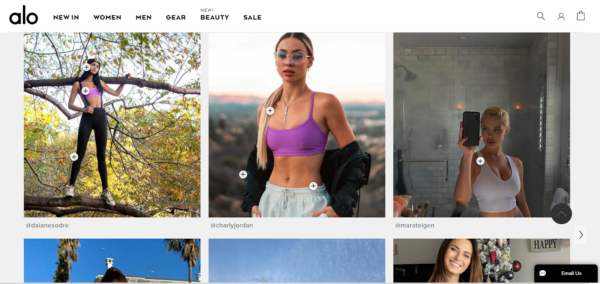
Even though 2020 was a game-changing year in every sense of the word, the sports industry is poised to bounce back and flourish in the coming years. With sports projected to thrive and fans hungrier than ever for sports content, now is the time to develop sports marketing strategies to grow your business.
What is sports marketing, exactly? It’s what you do when you craft and use sports-related content to promote your product or brand. This is a popular form of marketing that leverages the immense star power of sports to drive sales.
While super bowl ads and athlete endorsements are well-known examples of sports marketing in action, sports marketing also includes marketing that builds a brand around healthy or aspirationally athletic lifestyles. Using sports marketing strategies can add serious appeal for many consumers.
Below you’ll find five essential strategies to step up your sports marketing, including:
- Targeting a specific audience
- Creating engaging content
- Timing your content perfectly
- Building brand partnerships and sponsorships
- Using social media
As you go through these tips, remember: With sports marketing, it’s vital to keep up with emerging trends in the complex sports industry, such as downturns in television viewership and the increase in women sports fans. These elements can dramatically inform your strategic choices and how you implement them.
Get the expert marketing advice and tools you need to increase visits and word of mouth.
1. Targeting a specific audience
As with any form of marketing, it is crucial first to determine and understand your target audience. Consider the characteristics of your niche audience, such as:
- Location: Keep in mind the local sports teams and athletic heroes that your customers might have. Are you targeting a regional or local audience? Speak directly to specific audiences with tools like email segmentation.
- Interests: Is your audience into basketball, sailing, golf, or hiking? The more specific you can be in your marketing strategy, the deeper the connection you will build with customers.
- Lifestyle: Know the lifestyle and goals of your customers. Are they trying to get in shape, be a serious athlete, or enjoy sports as spectators?
- Income: How your target audience chooses to spend their time and money can be affected by their income.
- Age: Your marketing tactics may need to be adjusted depending on the age of your target audience. Try to narrow down a specific bracket.
- Level of athleticism: Have an idea of your customers’ level of athleticism or aspire to achieve. A casual jogger may not be interested in the same services or products as a marathon runner.
These factors can inform the details of your marketing campaigns.
For example, a campaign designed for young people on the West Coast who value an athletic, outdoor lifestyle will look vastly different from a campaign designed for older adults who might be more partial to nostalgic sports references and basic healthy lifestyle choices. Similarly, a campaign designed for youth and their parents will require its nuances.
While sports marketing centers on athletes, it doesn’t always target them. When considering your target audience’s athletic level, brainstorm ways you can appeal to them in unique ways.
2. Creating engaging content
If there is one thing sports fans — and your customers — are continually interested in, it is engaging content with their favorite sports figures. Should you be able to maximize the pre-existing networks of enthusiastic sports fans, you will open up your audience to new capacities.
Nike continues to reign as a brand that executes some of the most iconic sports marketing examples. They often pair with fresh new athletes and celebrities to create engaging content.
To fully tap into this plentiful resource of potential customers, consider using content marketing in the form of:
Suppose you can provide potential customers with compelling video, photo, and written content across multiple platforms. In that case, you can harness the excitement for celebrity and the passion for sports that many fans share. Content that features or interacts with their favorite sports players can be extremely engaging.
Does uploading a video to YouTube seem daunting? Check out Constant Contact’s resources designed to guide you through the process.

3. Timing your content perfectly
With sports marketing closely tied to seasonal sports and live events, it is important to consider the most effective time to post your content. For example:
- Ride the wave of pre-game buzz using effective event marketing strategies.
- Jump on opportunities to congratulate championship teams when everyone is watching.
- Keep a close beat on celebrity athletes and time content when they are most visible during the season — or when fans miss them in the off-season.
Timing is essential when scheduling content across all platforms. Consider when emails will be more effective versus social media. Once you’ve created the perfect rhythm for posting content and have developed an effective email campaign, consider using automation to keep consistent content rolling out to your customers and potential customers.
4. Building brand partnerships and sponsorships
Some of the most exciting elements of sports marketing come from its ties to popular sports and athletes. When developing your sports marketing strategy, consider:
- Using promotional contests: Contests can draw interest to your company and attract new followers to engage with your social media platforms. Promotions can create buzz and enhance customer outreach and interaction.
- Developing brand partnerships: Whether through a promotion or not, brand partnerships are a foundational part of sports marketing. Sports teams and sports brands often align to form a strong partnership. Take advantage of unique avenues for drawing in potential customers.
- Securing sponsorships: Sponsorships are an excellent way to generate brand visibility. Consider the times you have noticed a brand logo on jerseys, in stadiums, on the court, on helmets. Connecting with sponsors can mean gaining massive amounts of exposure.

5. Using social media
Sports marketing relies on exposure to sports and fitness fans. Because of this, social media is an excellent way to boost brand awareness. It is the modern cornerstone of sports marketing because of many fans’ deep connection with social media as a tool to enhance their game-watching experience.
Tap into this resource by creating a brand presence on:
- Facebook: While Facebook’s newsfeed often competes with marketing efforts, it can often elevate sports marketing strategies. Use Facebook to engage with customers, increase awareness, and call them to action.
- Instagram: As a visually-driven network, Instagram is a great place to generate awareness and engagement through event-related posts.
- Twitter: Twitter is the perfect place to foster conversation. It is a popular place for fans to keep up with athletes’ lives and thoughts, providing you with a great way to connect with potential customers.
About 52% of avid sports fans use their mobile device while watching an event on a different device. Harness this power by developing your social media marketing to connect with your customers before, during, and after the big game.

Next Steps
Now that you understand the importance of targeting a specific audience, creating dynamic content, building partnerships and sponsorships, and harnessing the power of social media, are you ready to develop your own sports marketing plan?
If you want to continue learning about sports marketing strategies, check out The Download — a free guide for recreation professionals that can show you how online marketing elements come together to build a more powerful business.




